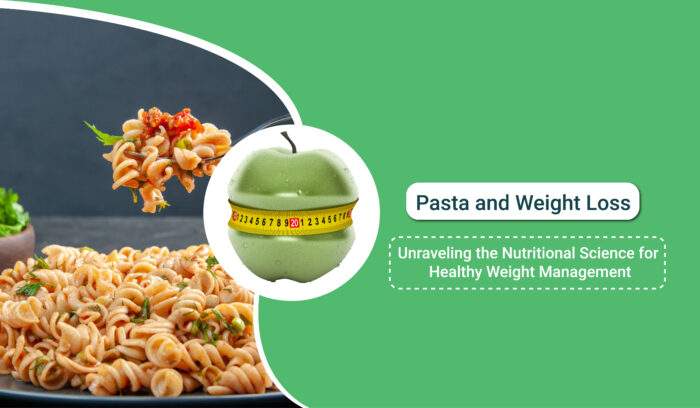Pasta and Weight Loss: Unraveling the Nutritional Science for Healthy Weight Management

In the pursuit of weight loss and a healthier lifestyle, individuals often find themselves at a crossroads when it comes to one of the world’s most beloved foods: pasta. This delectable Italian creation has become a topic of heated debate among those seeking to shed excess pounds. While some adamantly argue that pasta should be banished from the menu entirely, others contend that it can be a valuable addition to a balanced weight loss plan. With the abundance of conflicting information available, the question of whether pasta can be a friend or foe in the journey towards weight loss remains perplexing. In this comprehensive exploration, we aim to unravel the pasta paradox and provide you with a scientifically informed perspective on integrating pasta into your weight loss strategy.
Pasta: A Nutritional Deep Dive
Before we delve into the intricacies of pasta’s role in weight loss, it is essential to understand the basics of this iconic dish. Pasta, rooted in Italian culinary tradition, is traditionally crafted from durum wheat, water, and eggs. Over time, the world of pasta has expanded to encompass an array of grains, including rice, barley, and buckwheat. These diverse ingredients yield different nutritional profiles, which can significantly impact the role of pasta in a weight loss plan.
Is Pasta a Friend or Foe in Weight Loss?
The debate surrounding pasta’s compatibility with weight loss often centers around the type of pasta consumed. Refined pasta, typically made from refined flour or maida, is often criticized for its low fiber content and calorie density. In contrast, whole-grain, whole-wheat, and lentil-based pasta offer a healthier alternative. These varieties are richer in fiber, lower in calories, and boast a lower glycemic index. The key to understanding pasta’s role in weight loss lies in discerning the choices that align with your dietary goals.
The Role of Carbohydrates in Pasta
Carbohydrates are the cornerstone of pasta’s identity, but they have also contributed to its questionable reputation in the context of weight loss. However, the Mediterranean approach to pasta consumption emphasizes moderation rather than exclusion. When consumed in moderation and paired with vegetables and proteins like beans, chicken, or fish, pasta can indeed be part of a nutritious and balanced meal.
Deciphering the Glycemic Index (GI)
The Glycemic Index (GI) serves as a valuable tool in understanding how carbohydrates affect blood sugar levels. Pasta, particularly whole-grain varieties, typically boasts a low GI. This means it undergoes slow digestion, resulting in sustained energy and reduced hunger. Research indicates that incorporating low-GI pasta into a well-rounded diet can contribute to more effective weight management.
Choosing Weight Loss-Friendly Pasta
To make informed choices, it’s crucial to consider the type of pasta you consume. Weight loss-friendly options include whole wheat, brown rice, quinoa, chickpea, and spinach pasta. These alternatives offer fewer calories, reduced carbohydrate content, and higher levels of protein, fiber, and essential minerals.
Incorporating Pasta into Your Weight Loss Plan
Savoring pasta while pursuing weight loss is entirely feasible with the right strategies:
- Load Up on Vegetables: Elevate the nutritional value of your pasta dishes by incorporating a generous array of vegetables. Aim for a 1:2 pasta-to-vegetable ratio, experimenting with combinations such as artichoke hearts, peas, broccoli, and spinach.
- Pair with Lean Protein: Enhance the satiety of your pasta creations by integrating lean protein sources like grilled chicken or tofu. Protein plays a pivotal role in preserving lean muscle mass during weight loss.
- Opt for Low-Calorie Sauces: Opt for tomato-based sauces over calorie-laden cream-based options. Experiment with olive oil, garlic, herbs, and vegetables to craft unique, lower-calorie sauces.
- Embrace Healthy Fats: Incorporate beneficial fats, such as olive oil, to enhance flavor and extend the feeling of fullness. Ensure measured quantities to manage calorie intake effectively.
- Watch Your Portions: Exercise portion control to prevent overindulgence. A standard serving size of pasta is typically ½ cup dry or 1 cup cooked.
The Benefits of Whole Grain Pasta for Weight Loss
Whole grain pasta offers an array of weight loss benefits:
- Low Glycemic Index: Whole grain pasta aids in blood sugar regulation due to its low GI, reducing cravings and calorie consumption.
- Nutrient Density: Abundant in fiber, vitamins, and minerals, whole grain pasta supports both weight loss and overall health.
- Reduced Cravings: Complex carbohydrates in whole grain pasta stabilize blood sugar levels, curbing unhealthy snacking.
- Increased Energy: Pasta serves as a carbohydrate source, providing energy for workouts and daily activities.
- Sleep Improvement: The presence of tryptophan, an amino acid in whole grain pasta, may enhance sleep quality.
- Easy to Personalize: Whole grain pasta serves as a versatile foundation for nutritious recipes, allowing customization with lean proteins, healthy fats, and an abundance of vegetables.
- Aids in Weight Management: Whole grain pasta’s satiety value makes it an invaluable asset in weight management.
Delicious and Nutritious Pasta Recipes
Experience the fusion of flavor and nutrition with these delectable recipes:
Recipe 1: Whole Wheat Vegetable Pasta
- Whole wheat pasta
- Bell peppers
- Broccoli
- Tomatoes
- Onions
- Garlic
- Olives
- Oregano
- Chilli flakes
- Black pepper
- Olive oil
Recipe 2: Quinoa Pasta Salad
- Quinoa pasta
- Cucumber
- Bell peppers
- Cherry tomatoes
- Black olives
- Chickpeas
- Red onion
- Yoghurt dressing (lime juice, olive oil, garlic, maple syrup, salt, and pepper)
A Weight Loss Hack: Cold Pasta
An intriguing weight loss hack involves consuming pasta in its chilled state. This unconventional approach leverages the cooling process, which transforms a portion of the pasta’s starches into resistant starch. This resistant starch resists digestion, fostering a prolonged sense of fullness and subsequently reducing overall calorie intake. Thus, the next time you have leftover pasta, consider embracing this unique twist on a weight loss strategy by savoring it cold.
The Final Word: Pasta and Weight Loss
In the expansive realm of dietary staples, pasta has weathered countless storms and undergone a paradigm shift. Once perceived as a nemesis to weight loss, pasta now emerges as a potential ally. Armed with the wisdom of discerning pasta varieties, exercising portion control, and adorning your creations with nutritious vegetables and proteins, you can seamlessly integrate pasta into your journey toward a healthier you.
Conclusion
Pasta, the delectable global treasure, can seamlessly fit into your dietary mosaic when you make conscious choices for holistic well-being. The art of effective weight management hinges on the balance of calories. Keep vigilant watch over your calorie intake, maintain an active lifestyle, and embark on a flavorful journey with the guidance of Dr. Anal Prajapati, an accomplished dietician at Anamay Diet Studio, an oasis of wellness dedicated to your health. With her tailored strategies and expert compass, navigate towards a life enriched with well-being, making every day a masterpiece on your journey to better health.







